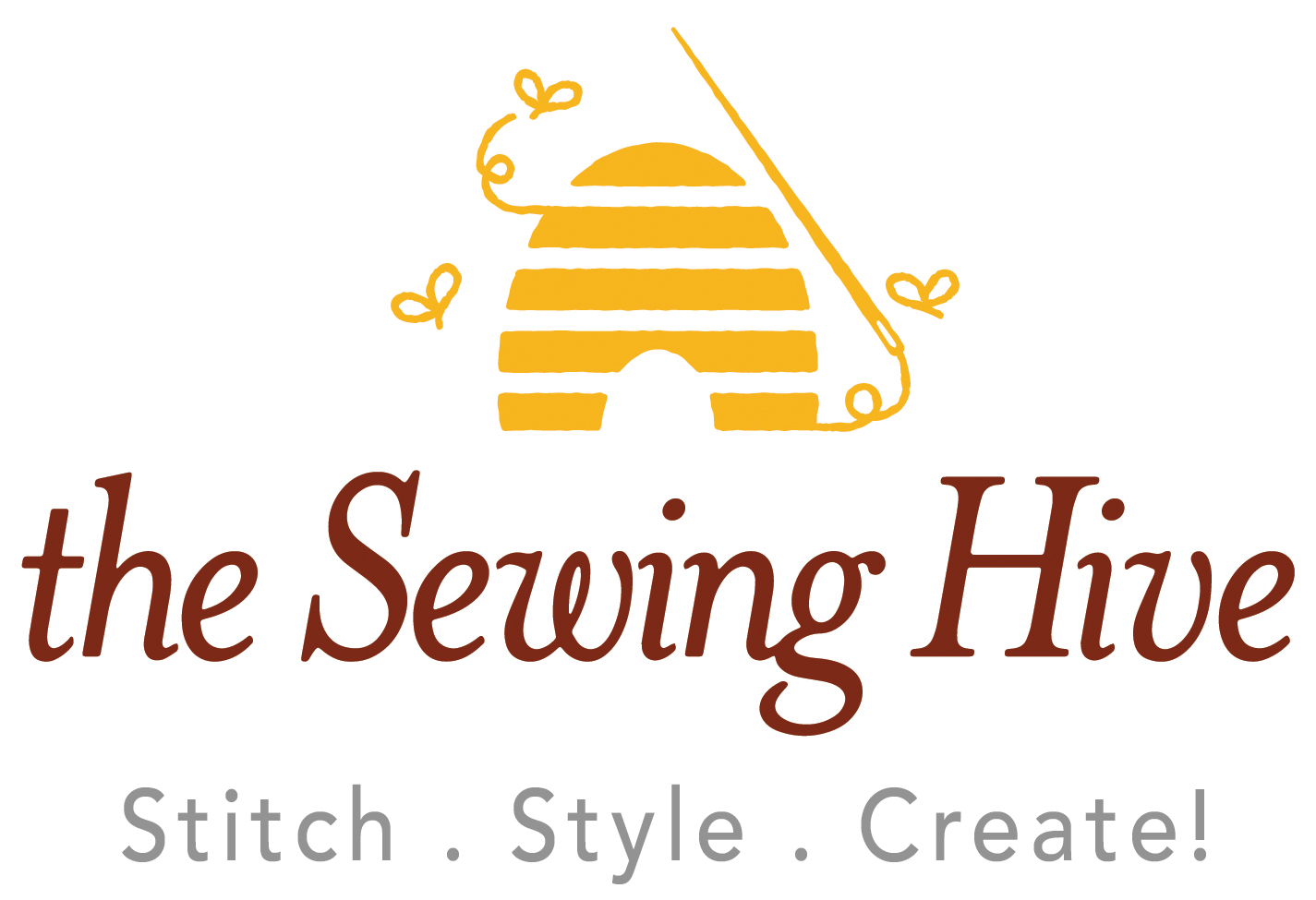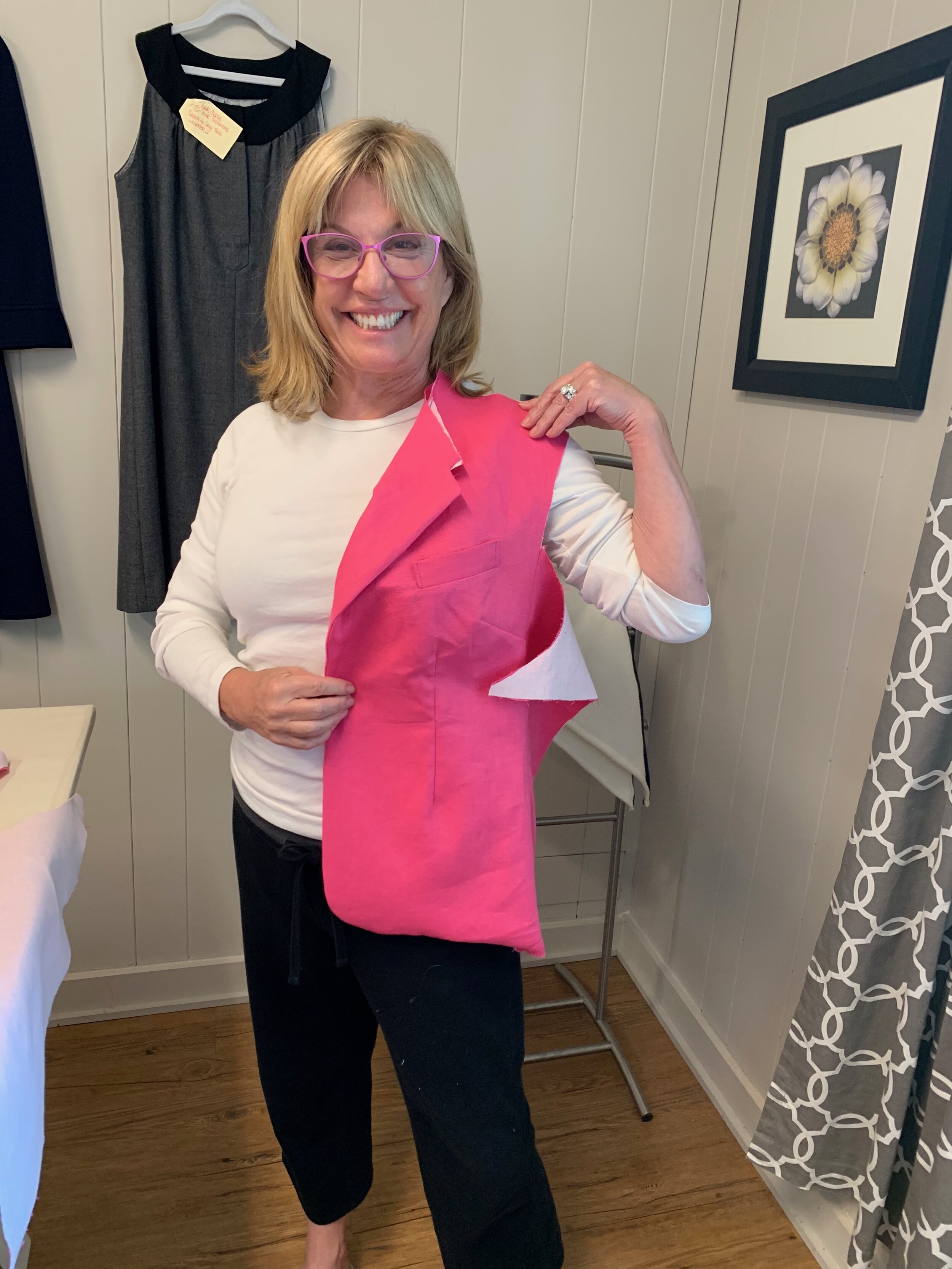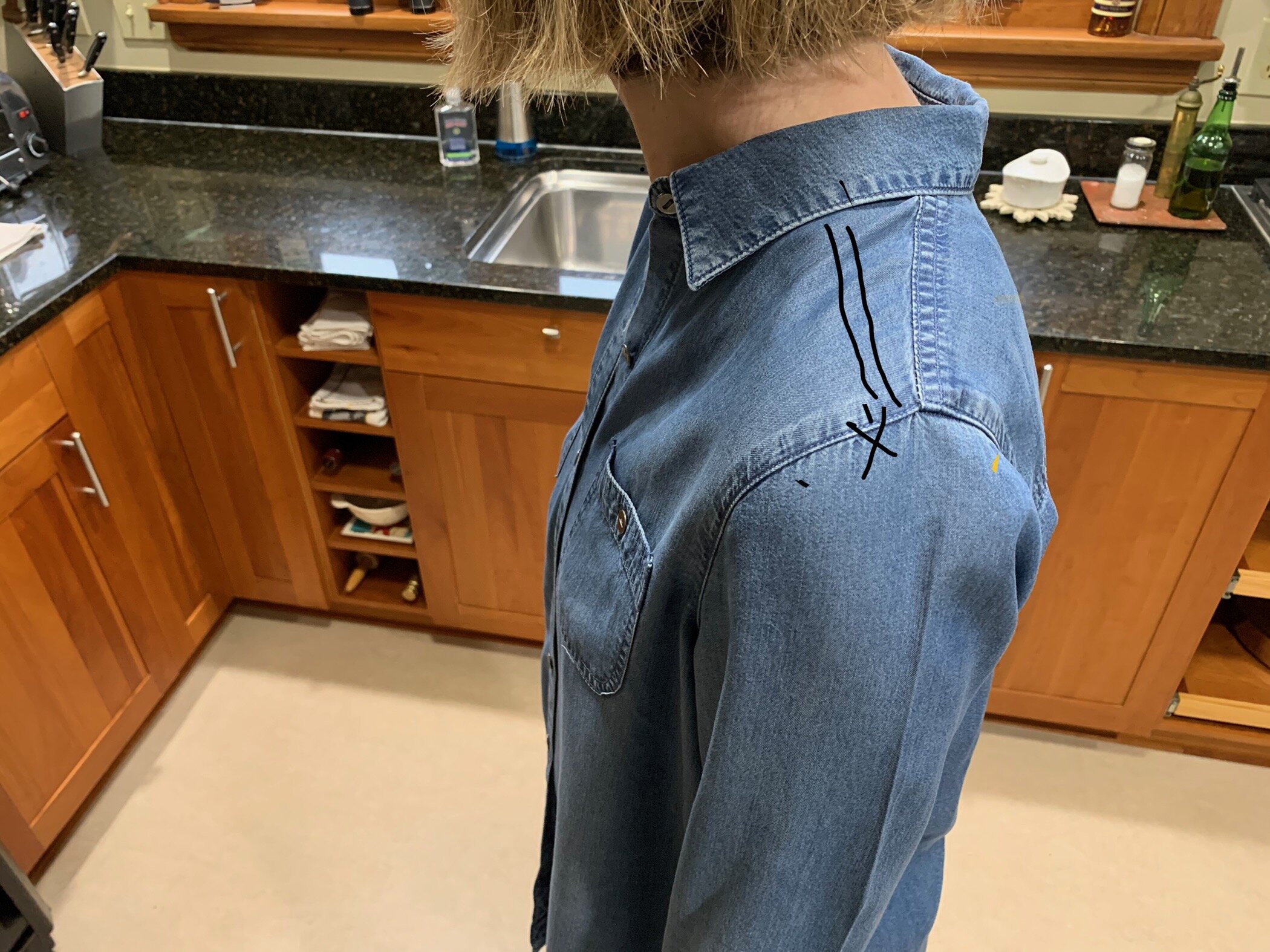Meet our most determined, joyful client, Linda! She truly is one of the funniest, happiest people I have met.
Linda is finishing her FIFTH coat/jacket to be started and completed in the last 18 months. To flesh out the picture, I met Linda about two years ago when she took a pants class at a fabric store, and I was the instructor. She came with the pants already cut out, and I thought maybe a raccoon had nibbled the fabric away. (Sorry, raccoons; yes, Linda had already read this before I published it.) After a few hours, I asked if she was left-handed, which explained the tortured fabric and her tortured left hand using right-handed scissors.
One of our very first customers…
Not one to be happy just to stick her toe into the water, Linda plunged right in to learn everything she could about sewing outstanding garments. Recently retired, she had a beautiful white wool fabric, purchased many years ago while she was working, and she wanted to make a jacket. After seeing the beautiful fabric, we talked about maybe working on some linen first.
The very next project was the Kelly Anorak trench with lining.
Never one to shy away from a tough fabric if that was the correct fabric, Linda sourced a water resistant material from Seattle Fabrics, and the lining from Liberty of London. Zippers, snaps, grommets….she gamely tackled it all. She has a beautiful light weight trench she wears proudly.
The next project
…was a white wool winter coat, belted, with fake fur buttons that add flair and Linda’s distinctive style.
Linda is a shirt-and-jeans kind of laid-back girl, so Project Five was a shirt. We believe a woven shirt is a great skill builder: topstitching, buttonholes, fitted shoulders, plackets, collars, and cuffs. The results are pretty great, with rounded pearlized buttons. Along with three other ladies, Linda is finishing her French couture jacket. Up next, pants!
Here is what working with Linda has taught us…..it is a great idea to take a basic sewing course if you are a beginner, but never be afraid to dive right in and learn by just SEWING.

















